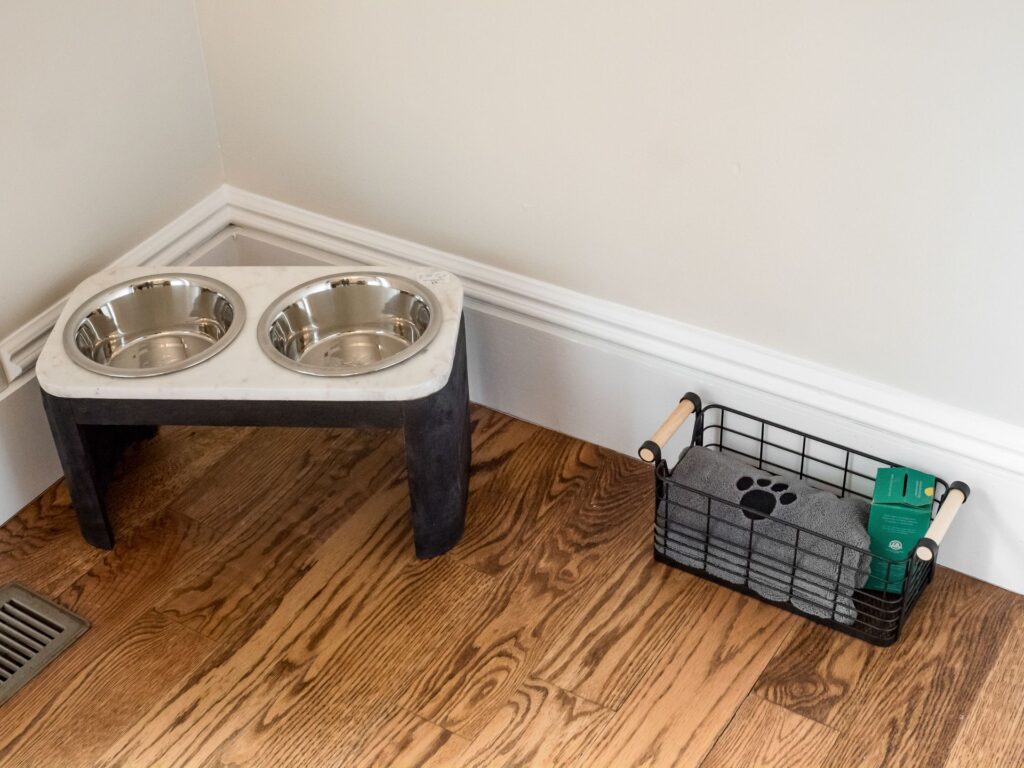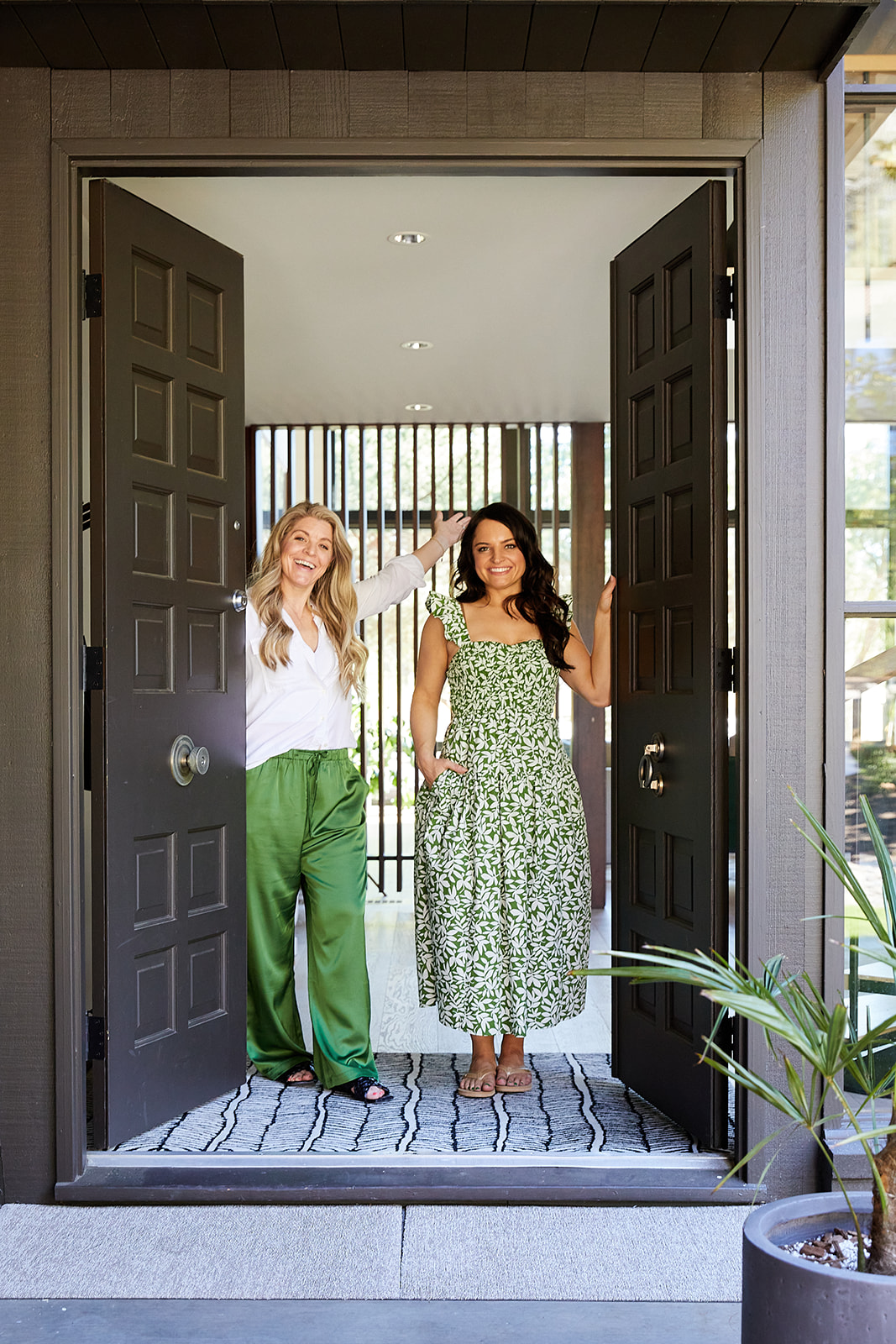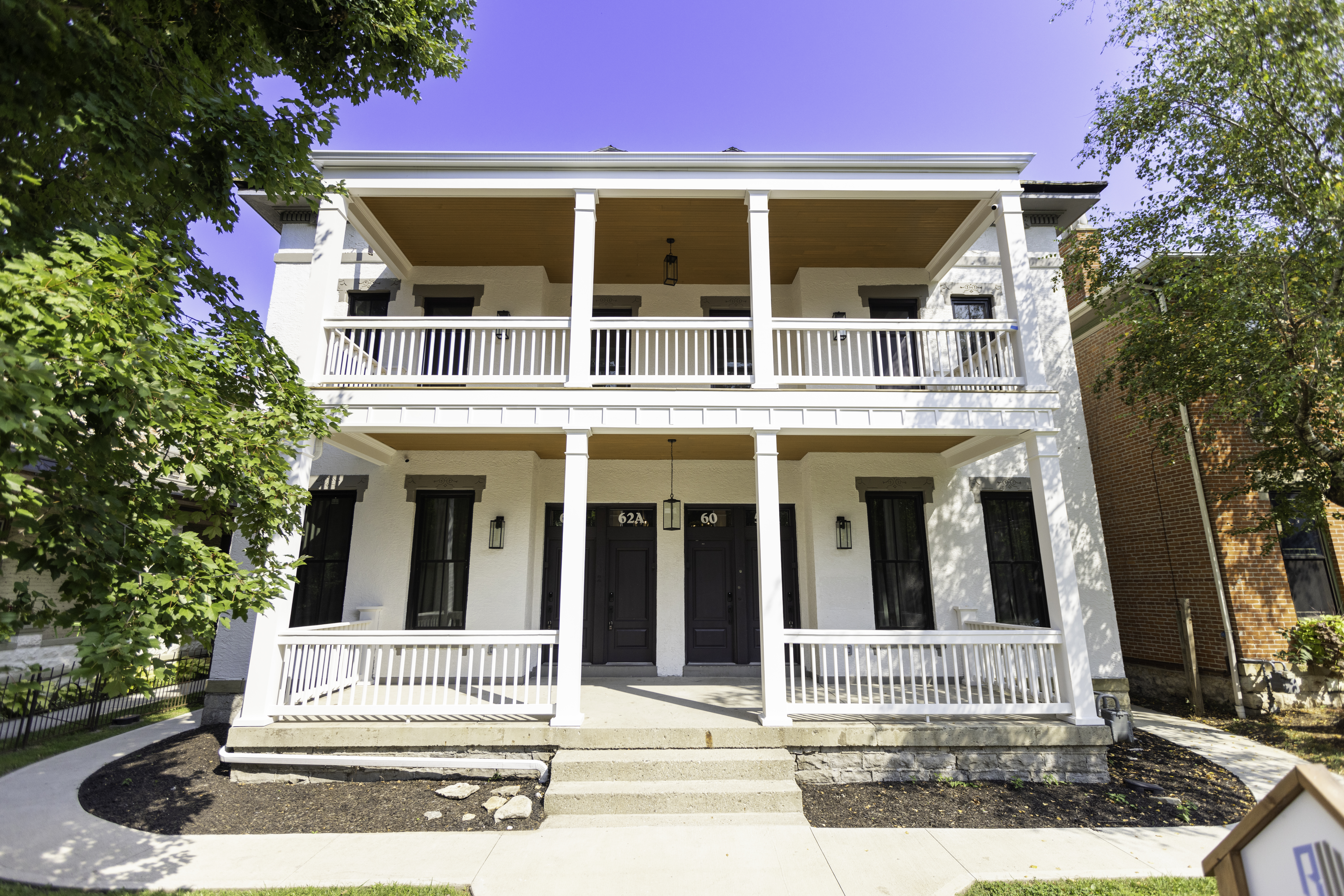
A Guide To Pet Fees For Savvy Hosts
Are you possibly missing out on thousands in rental income? It’s time to stop because Airbnb is actually helping us hosts earn more money. It’s a known fact: pet-friendly properties can bring in more revenue, and understanding Airbnb pet fees is central to this. Airbnb’s own information backs this up, and honestly, it’s what every host dreams about. Properties that welcome pets often see more bookings and can command a higher nightly rate. Plus, stick around, because Airbnb has updated how we can charge for furry guests, and these changes to Airbnb pet fees are designed to help you make more money. You’ll learn exactly how to set it all up.
Many hosts have seen great success by opening their doors to pets. After years in the hosting game, welcoming countless guests, and earning thousands of stellar reviews, it’s clear that small changes can make a big difference. We’re here to give you practical advice for your furnished rental business, especially concerning the Airbnb pet fee.
Let’s talk about why you should really think about allowing pets. If you’ve been on the fence or have always said “no pets,” just hear us out for a moment. There are strong reasons to consider making your property pet-friendly and how to best charge pet fee amounts.
We’ve rounded up all of our Airbnb Hosting Must-Haves right here in our Amazon Store. Click here to grab everything you need to curate your property and start earning 5-star reviews.
Why Welcome Paws to Your Property?
- Why Welcome Paws to Your Property?
- The Big 2025 Update on Airbnb Pet Fees
- Setting Up Your Airbnb Pet Fees: A Step-by-Step Guide
- Smart Strategies for Pricing Your Airbnb Pet Fees
- The Not-So-Furry Side: Risks and How to Manage Them
- Conclusion
Why Welcome Paws to Your Property?
Deciding to allow pets in your Airbnb isn’t just a small tweak to your listing pet details. It can significantly change your booking landscape for the better. Think about the number of travelers who consider their pets family and actively search for accommodations where they can bring pets.
Boost Your Bookings
So many travelers these days simply won’t go anywhere without their beloved four-legged friends. When you open your space to pets, you’re instantly reaching a much larger market. People frequently use the “pets allowed” filter when searching for accommodations on Airbnb; this is often their primary search word.
If your property isn’t listed as pet-friendly, you’re not even showing up in their search results if they selected “pets allowed” as a filter. You’re out of the running before the game even starts if that’s their first search criteria. As a proud dog owner myself, I know that finding a place that welcomes my dogs is the very first thing I check when I search enter my destination.
It’s not just a matter of convenience for these pet owners; it’s an amenity they actively seek. They could board their airbnb pet or ask family, but bringing their companion along makes the trip better. If you appear in that filtered search—and “pet-friendly” is one of the most searched amenities—you’re already ahead. What’s great is that unlike expensive amenities like pools or hot tubs, allowing pets is a low-cost way to attract many more travelers. Financially, the adjustments needed are minimal, but the market expansion is substantial.
Command Higher Nightly Rates
Another big plus is the potential for a higher nightly rate or an additional airbnb pet fee. Either way, pet owners are generally willing to pay more, which can increase the total price of the stay. They understand that traveling with a pet often involves extra costs, whether it’s for gas to drop them off with family, boarding facility fees, or a pet sitter.
They see value in having their pet with them and expect to pay a bit extra for that privilege. This means you can either build a pet premium into your base rate or add a specific airbnb pet fee. You get a payday for offering this desirable feature, and the fee charge is often accepted without issue.
Want to attract more bookings from pet owners—and keep your place in tip-top shape? Don’t miss our free Pet-Friendly Checklist for Airbnb Hosts! This comprehensive guide will help you prep your property for furry guests while protecting your furniture, floors, and five-star ratings. Whether you’re new to allowing pets or looking to fine-tune your setup, this checklist ensures you cover all the bases—making both pets and their people feel right at home.
Cultivate Repeat Guests
Think about the loyalty you can build. If guests and their pets have a fantastic stay at your property, they are far more likely to book with you again. When they know their animal companion was comfortable and welcomed, it creates a strong positive association with your rental. Many local host communities and host clubs share stories of repeat pet-owning guests.
You can really lean into your pet-friendly status in your marketing to encourage repeat business. Remind past guests about your wonderful fenced-in yard or the special pet amenities you left for them. Tugging at those heartstrings can effectively build your roster of repeat guests who appreciate your thoughtfulness and fair airbnb pet fees.
Encourage Longer Stays
Pet owners might also book longer stays. If they know they can bring pets, especially for work-from-home situations or extended family visits, they’re more likely to stay for a few weeks. Imagine guests who can seamlessly transition their home life, pets included, to your property for an extended period.
Without their pets, they might shorten their trips due to concerns about leaving them in a kennel or with a sitter. Allowing pets can remove that barrier, leading to more occupied nights for you. This is particularly true for guests seeking midterm rentals who want their companions with them for the entire duration.
The Big 2025 Update on Airbnb Pet Fees
So, what exactly changed with airbnb pet fees in the 2025 update? And how can these changes help you make more money? Airbnb is definitely making things easier for hosts when it comes to charging for pets; these airbnb updates are often based on feedback from the airbnb community.
Before this update, the system had its limits regarding how hosts could charge pet related expenses. You could only charge a flat rate per stay. This meant that whether a guest brought two dogs for two nights or one dog for ten nights, the airbnb pet fee was the same. It was frustrating because you couldn’t adjust it per reservation based on the specifics, such as the dog maximum you might allow.
But, we have to give Airbnb some credit here. They do listen to host feedback, often gathered from forum topics or discussions in the community cafe. Initially, there wasn’t even a formal pet fee option. So, they took a step by introducing the flat fee. Now, they’ve taken it another step further, giving us more flexibility.
This is a great example of how Airbnb does make changes that can benefit us. But, it’s up to you, the current user and host, to take advantage of these improvements. Making these updates to your listing, especially concerning airbnb pet fees, can directly impact your bottom line. You’ll learn precisely what changed and how you can use these new options. You can often find host guides or visit the resource center for more detailed explanations from Airbnb.
Your New Pet Fee Options Explained
With the latest update, you now have several ways to structure your airbnb pet fees. It’s great that Airbnb is giving hosts more control over how they charge fee amounts for pets. Let’s look at what’s available.
You can still opt for the traditional flat rate per stay if that works for your model. Some hosts prefer its simplicity. But now, you can also charge a fee that is per night, which many find fairer for shorter stays or varying numbers of pets. This is definitely an improvement when deciding how to include pet charges.
Another option is to charge pet individually. This way, if a guest brings multiple pets, the fee reflects that. The best option for many, and a popular workaround hosts used previously, is to charge per night AND per pet. This model closely mirrors how many pet boarding facilities operate. If someone wants to bring their chihuahua and their poodle for three nights, it’s, say, $30 per pet, per night. This is often less than what a local boarding kennel charges.
Now, some hosts feel charging this way isn’t very hospitable. Some don’t charge pet fee amounts at all, or they stick to a small flat rate. But it’s important to do your research. Check out local pet boarding facilities in your area. Call them and ask about their per-pet, per-day rates. You might be surprised by the investment involved in pet care. We feel confident that our pricing for pet stays is fair. It aligns with the service provided and the costs associated with welcoming pets properly. These additional charges should be clear to guests.
Your pricing should also consider what it takes to keep your property in top condition after a pet stay. We are not saying you should allow pets and skip extra cleaning you’d normally do. You will likely need to adjust your turnover protocols, and your fees can help cover this. We’ll get into that more a bit later. Some hosts use the auto-suggest helps feature when setting prices, but direct research is often best for pet fees.
Worried you might be missing something in your hosting strategy? Check out our blog post on Top Airbnb Host Mistakes and How to Avoid Them. From unclear house rules to overlooked pet policies, it breaks down common errors that can lead to guest complaints, extra fees, or lost revenue. It’s a must-read for any host wanting to tighten up operations and avoid the pitfalls that trip up even experienced hosts.
Setting Up Your Airbnb Pet Fees: A Step-by-Step Guide
Ready to adjust your airbnb pet fees? It’s quite straightforward once you know where to look. You’ll make these changes on the host side of Airbnb.
First, log in to your Airbnb account and go to your hosting dashboard. At the top center of your screen, you should see “Calendar.” Click on that. Your listings will appear. Select the specific listing pet settings you want to update.
The calendar for that listing will pop up. On the right side of your screen, a panel will slide out. It will usually say “Pricing” or “Availability” at the top. Make sure you’re on the “Pricing” tab. Scroll down until you find “Additional charges.” Click on “Fees” within that section.
A new sidebar will appear from the right. Here, you can adjust your cleaning fees, but we’re focused on the pet fee. Look for “Pet fee” and click the little arrow (caret) next to it. This will reveal a dropdown menu with the different charging options: per stay, per night, per pet, or per pet and per night. This is where you choose your preferred structure and set the amount. Don’t forget to click save once you’ve made your selections.
Crucial: Set a Maximum Number of Pets
While you’re setting up your fees, don’t forget this important step: specify the maximum number of pets you allow, or your dog maximum. You really need to think about this. As much as we love being pet-friendly, it’s wise to have limits.
In my properties, I don’t think having three, four, or five dogs running around is ideal. It’s not just about the increased wear and tear, even with responsible pet owners. Depending on your property type and location, too many pets can also impact other guests or neighbors. Setting this parameter means someone can’t automatically book with four pets if your limit is, say, two, especially if you’re charging per pet. The airbnb community often discusses best practices for pet limits.
Smart Strategies for Pricing Your Airbnb Pet Fees
Deciding which fee structure is right for you requires some thought. You want to attract pet owners but also cover any additional costs and effort. Let’s consider some approaches to help you set your airbnb pet fees wisely.
Thinking About Fee Structures
If you choose a fee structure like per pet, or per pet and per night, it can significantly increase your revenue per stay. This might seem like a lot to a guest, but you can use these funds effectively. This extra income can go towards making sure your deep cleaning after each pet stay is truly top-notch, addressing the common concern that a property might not be pet free of allergens for the next guest.
Some hosts we know, especially those with luxury properties, use these fees to bring in professional upholstery cleaners. They might have a company come steam clean the rugs and sofa after every pet booking. You can manage your property how you see fit, but remember this fee structure allows for more thorough care. You can even mention this in your marketing, perhaps in your house rules or listing description. Explain that the pet rate contributes to an exceptionally clean environment for all guests, and it covers multiple aspects of pet accommodation.
On the other hand, if you want to keep costs lower for guests, you might stick with the per-stay flat airbnb pet fee. This can be a good option if your average stays are relatively short and you limit guests to bringing only one pet. If you aim for higher turnover to maximize revenue, a straightforward flat fee might be appealing to potential guests who bring pets.
This flat fee per stay model can also work very well for hosts offering midterm rentals. If you primarily host guests staying 28 days or longer, as defined by platforms like Airbnb for longer stays, a one-time pet fee for the entire duration can be very attractive. It offers simplicity and good value for those longer-term pet-owning guests. It’s great that Airbnb offers these variations, giving us control to price what’s right for each listing and avoid losing money.
No Pet Fee? Bake It into Your Nightly Rate
There’s one more approach. If you still prefer not to charge a separate pet fee but want to welcome pets, you can increase your overall nightly rate. This way, you might appear more attractive to pet owners who see “no additional pet fee” in your listing. You’ve essentially “baked” the cost into your nightly pricing. This strategy can be effective if you prefer not to itemize every fee charge.
The most important thing, and what this is all about, is making sure you are financially compensated. Whether it’s built into your rate, charged per stay, or per pet per night, you should be rewarded for allowing pets. You’re offering an additional, valuable amenity. We see too many hosts welcoming multiple pets without any financial benefit, and that’s not a sustainable business model. For questions on structuring this, you might post question on a host forum or consult host guides.
The Not-So-Furry Side: Risks and How to Manage Them
While welcoming pets can bring many benefits, it’s important to be realistic. We want you to make more money, but also to be aware of potential downsides. Knowing all sides helps you make the best decision for your rental business and your airbnb pet fees strategy.
Cleanliness is Critical
This is a big one. Yes, people are searching for pet-friendly properties. If your listing pet friendly status shows up and looks great, they are more likely to book. But hear me out: if your turnover process isn’t excellent, you’re in trouble. If your place isn’t perfectly clean, specifically from pet hair or odors, it will backfire. It’s important to maintain high standards, similar to a pet free property, for non-pet-owning guests.
Imagine a guest who doesn’t bring pets but books your pet-friendly place. If they sit on the couch and get covered in dog or cat hair, that’s not going to result in a good review. You’ll start getting four or even three stars on cleanliness. Soon, it won’t matter that you’re listed as pet-friendly. The algorithm won’t favor your listing because guests aren’t happy. You must have a solid turnover process after every single pet stay. Your property needs to return to its baseline, spotless condition each time.
Communicate with Your Cleaning Team
Here’s a lesson learned the hard way: don’t forget to fully discuss your decision to be pet-friendly with your cleaners. We decided to go pet-friendly for the revenue boost and to open our doors to more travelers. We wanted to reap those rewards. We even added pet amenities like special towels for muddy paws and waste bags.
But these new amenities meant extra items to wash and manage. Pet stays can often require deeper cleaning you’d typically schedule. It’s vital to communicate these changes to your entire team, as the burden often falls on the cleaners. More importantly, compensate them fairly. If pet stays mean more work, and you’re making more money from those airbnb pet fees, your team should benefit too. So, chat with your team, make sure they’re on board, have a plan for pet deep cleans, and discuss any needed additional compensation.
Potential for Damages
You also need to think about animal damages. Thankfully, most people with pets are responsible owners. But it’s wise to have clear rules in place, as outlined in the community guidelines. For example, many hosts require pets to be crated when guests are not at the property. Some even ask guests to take their dogs with them.
Dogs in unfamiliar environments can get stressed. This can lead to destructive behaviors like pawing at doors or chewing furniture. We often have this conversation manually with guests bringing an airbnb pet. You could automate this messaging, but we find a personal touch helps. We tell them something like, “We know you’re a great pet parent and your pet is wonderful. But in our experience, dogs can sometimes experience anxiety in new places, which might lead to accidental damage.”
But what if damage happens anyway? What if they don’t use the crate, or promise to bring one and don’t? You need to be prepared. Think about your security deposit or if you use a damage protection program like AirCover. Be aware that many damage waiver programs don’t cover pet damage. The airbnb pet fee you charge covers normal cleaning after a pet; it does not cover actual damage like a chewed-up chair leg. If significant damage occurs, you may need to request payment through the resolution center. Make sure your house rules and rental agreement clearly state this. You need a way to hold guests accountable if significant damage occurs from their Airbnb pet. It is rare, but it happens. For us, it’s sometimes the front door from pawing. Our handy person might need to sand and repaint it. It could be a $100 or $150 fix, but you need to be ready to get your property looking great again quickly. You don’t want to be a pet-friendly place that looks worn down. If guests fail to control their pets or cause disturbances, you might need to report inappropriate content or behavior.

Addressing Guest Allergies
This is something that will likely come up. Potential future guests might see you’re pet-friendly and inquire because they have allergies. They might ask, “I’m allergic to dogs; can you tell me if one has stayed recently? Will I have a reaction?”
Here’s the truth, and this applies whether you officially allow pets or not: service animals are generally allowed to stay at your property regardless of your pet policy. According to Airbnb’s accessibility policy and laws like the Americans with Disabilities Act (ADA), hosts must typically accommodate service animals, which can stay free of additional charges specifically for the animal. You can learn more about these requirements on the ADA’s official website or Airbnb’s resource center. So, even if your listing pet policy is “no pets allowed” or you’ve selected “no pets allowed”, you can’t absolutely guarantee a pet hasn’t been there (if a service animal stayed). It’s important to distinguish a service animal from an emotional support animal; emotional support animals do not always have the same access rights and may be subject to your standard Airbnb pet fee. The classification of support animals versus service animals can be confusing, so familiarizing yourself with the accessibility policy is key. When this allergy question comes up, you must be honest. It simply might not be a good fit for that particular guest.
Calling All Hosts: The Hosting Handbook
If you loved this post we invite you to check out our one-stop-shop solution for hosts everywhere —the Hosting Handbook! While you can download all the easy to consume, step-by-step tips we use in our own hosting business and create the ultimate “book” the Hosting Handbook is so much more than that! If you’ve consumed or content for years (or just met us!) this is the reference guide for all the amazing and tactical tips we have for running a profitable and, more importantly hospitable, short-term rental. How do we price for pets? How do we fold our towels? What sheets do we buy? How do I purchase a short-term rental? All these questions (and more!) can be answered in the Hosting Handbook! Check it out now!
Happy Hosting!



show comments
HIDE comments